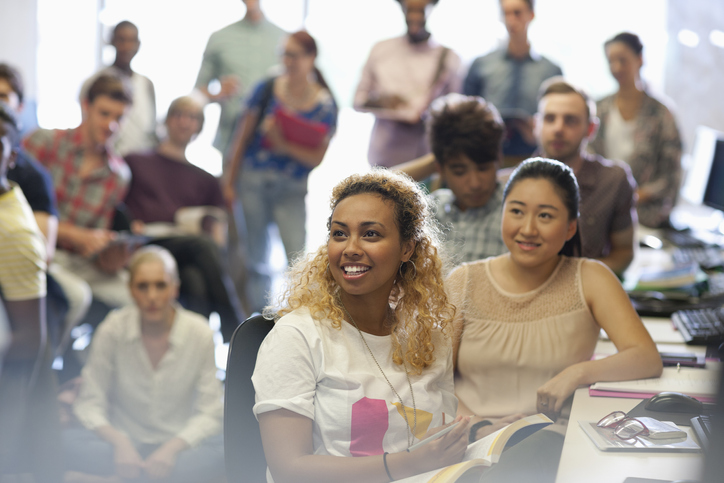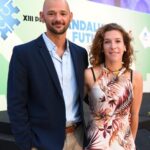The Goal of Education
Student-centered learning, democratic education, youth empowerment, and change agency are educational trends pointing in the same direction. They aim to encourage young people to take charge of their learning processes. It is a significant change! It invites us to rethink the very purpose of education.
A recent article from the think tank The Brookings Institution explains why so many educational reforms do not work: they need a holistic approach. “Any discussion of pedagogy must address the underlying purpose of education,” we are told. If we do not start with this question, all potentially positive initiatives to improve education fail by not considering the human complexity of education. In other words, education can’t be separated from our cultural context, values, and critical concepts, such as our definition of success.
This central question is the focus of our research in Evolving Education, where we visit some of the most transformative educational centers in the world, document their practices, and develop training programs to democratize them. Our ebook, The Secret of Quality Education, starts by asking this critical question: What does quality education mean?
Intrinsic motivation to learn
However, that was different from the question with which we began our research. Before leaving home (which at that time was Cambridge, UK), we asked all the educators we knew to tell us their main challenge. We talked to teachers in primary, secondary, vocational, and university education and even with parents. Their diverse responses often included the question, “How do I motivate my students?“
So, we took that question in our travels through the Middle East, Asia, Europe, and Latin America. We identified schools doing things differently in each country and learned from them. We carried the list of questions, including “How to motivate?”
However, in many schools that had transitioned to some educational trend based on empowerment, educators replied that this question was irrelevant there, belonged to an educational paradigm of the past, and did not help young people prepare for the future.
In this video, we reflect on Education and Future Challenges along with seven pioneers of educational change using as a trigger one of the most common complaints of young people: “Why study if I am not going to have a job?” These teachers work with young people to learn about intrinsic motivation.
One of the most accepted theories on motivation is the Self-Determination Theory, presented by researchers Edward L. Deci and Richard Ryan in their book Intrinsic Motivation and Self-Determination in Human Behavior. This theory points to three indispensable elements for intrinsic motivation: (1) Competence, the feeling of effectiveness and self-confidence to pursue and perform tasks; (2) Belonging, a feeling of security and connection to the learning environment; and (3) Autonomy or freedom of action. The researchers go even further, proposing that these characteristics are not necessary only for motivation to learn but are basic psychological needs.
How to move from motivating to empowering can take many forms. So, in recent years, we have focused on helping educators and schools find what works contextually, following methodologies like those used by startups to develop prototypes and innovate continuously (for example, Design Thinking). To this end, another pillar of our activities has been helping educators develop the necessary mentality for this change, which, as Gandhi said, begins with oneself. In other words, in education, professional development requires personal development. You can read more about our EXPedition methodology here.
Competency to change the world.
Let me provide examples of how to put these three principles of intrinsic motivation into practice. Let’s talk about competency (which does not refer to competing but to feeling competent).
We recently spoke with Javier Ibáñez Iborra, a teacher and member of the Teachers for Future Spain collective, in our online EE Webinars. Javier invites the students of his primary class (11 years old) to investigate and understand the impact of their consumption habits with projects such as “Zero Waste” or “The Kilometers of Food,” in which geography, mathematics, and written expression merge in interdisciplinary projects.
One of the most striking projects discussed in our conversation is Africa: One Thousand Stories, which brings together multiple projects to understand the continent and take action. As Javier says, these involve “Knowledge with commitment.” For example, coltan is a mineral used in mobile phones and other electronic devices. Mines in the Democratic Republic of Congo are home to around 80% of the world’s coltan. This mineral is one of the sources of funding for armed groups in the country, which has the world’s most significant number of child soldiers. After learning that overconsumption of mobile phones contributes to this problem, the children set to work to raise awareness in their city and organize a recycling campaign for old phones that can be an alternative source of coltan and other electronic components. Javier’s class has called itself #LaClaseQueVaACambiarElMundo (#TheClassThatIsGoingToChangeTheWorld). That is competency!
Belonging and self-esteem
To talk about belonging, we went to Bogota, Colombia. Gustavo Díaz Romero and Ángela Díaz Osorio are teachers in a vulnerable community stigmatized by poverty and migration. They set out to create a space that allows young people to experience their school differently: Acaciarte. Instead of making differences invisible to move forward with the agenda, they facilitated dynamics in which each child could identify their identity and recognize and respect the diversity of their peers. Artistic expression was their great ally, using theater as a pretext. In their first performance, they combined dance and theater and performed The Royal Gardener in English.
The strength of the project became visible when the COVID-19 pandemic arrived. Instead of stopping, the project increased in scale, involving families in the audiovisual productions developed by the students. The initiative not only improved students’ academic results but also their self-esteem and feeling of belonging and the relationships among the families associated with the school. Here are the best highlights of the interview.
Autonomy to learn from our mistakes
In Shanghai, we found the model of Mondragon Team Academy, a Spanish university that connects centers in Europe, the USA, and Asia; it quite well exemplifies the principle of autonomy. Its business students do not memorize theories of supply and demand but learn through startup ventures beginning in their first year of the program. Markel Gilbert, who leads the initiative in China, spoke to us about some of the model’s key components.
“You start with yourself,” he told us. To be able to act autonomously, you must start by knowing yourself, a concept omitted by many educational programs that produce young people with degrees but without purpose. Second, learning happens in teams. One of the biggest concerns of companies is how to encourage teamwork. We know how to distribute tasks, but we have yet to necessarily develop the skills to empathize, understand the needs of others, and co-create. Teamwork is a second pillar of their model. Finally, their projects are confirmed. Young people create companies that have customers and make an impact; it is not a simulation. The students will undoubtedly experience many challenges, and few of these companies will survive (as in the real world). However, therein lies the best lesson: making mistakes is part of learning. Every setback is an opportunity to grow.
Tools for change
As you can imagine, the role of the teacher changes significantly in this scenario. Our function is no longer to transmit information; many means are available for adapting to the best learning method. The role of educators now is to create the spaces in which learning takes place and to accompany these processes. It also changes the role of students: “They go from being passive followers or consumers to creators,” Markel tells us.
The change needed to move from motivating to empowering is significant. The good news is that there are many validated models and tools for this. In Evolving education, we facilitate access to the tools and professional and personal development processes to develop the skills and mindsets for change. We invite you to try it in Learning Expedition.
About the authors
David Caballero Pradas and Luz Olid Díaz are the founders of Evolving Education, a platform to democratize the practices of the most innovative educational centers to enable student-centered learning. Luz brings experience in academic research, audiovisual production, education in public schools and vulnerable communities, and facilitation of agile learning centers in the United Kingdom, Spain, Peru, Guatemala, and Mexico. David brings experiences in leadership, personal development, project management, partnerships, and social innovation in NGOs, startups, academia, and multinationals. Both have received the Andalusians of the Future Award in Social Action in 2021 and 2023. David is also a Fellow of Excellence of the La Caixa Foundation, a winner of the Talent Award at Pablo de Olavide University, and a member of the alumni network of Cambridge University. The contact email for more information is info@evolvingeducation.org
Editing
Edited by Rubí Román (rubi.roman@tec.mx) – Editor of the Edu bits articles and producer of The Observatory webinars- “Learning that inspires” – Observatory of the Institute for the Future of Education at Tec de Monterrey.
Translation
Daniel Wetta
This article from Observatory of the Institute for the Future of Education may be shared under the terms of the license CC BY-NC-SA 4.0 
)
)


)